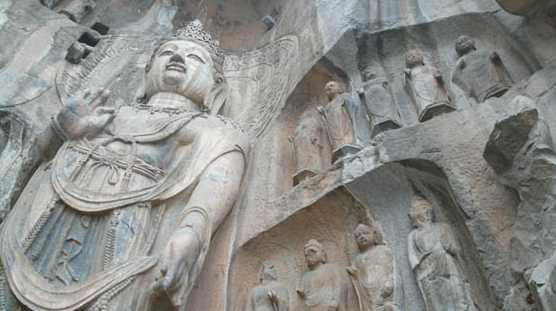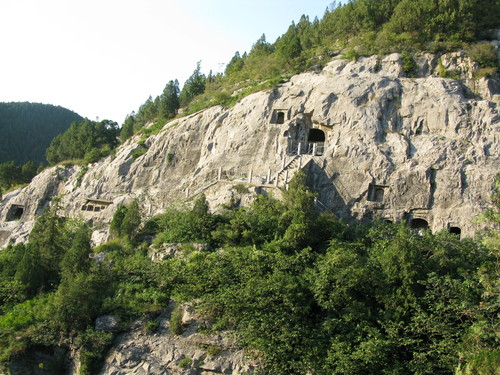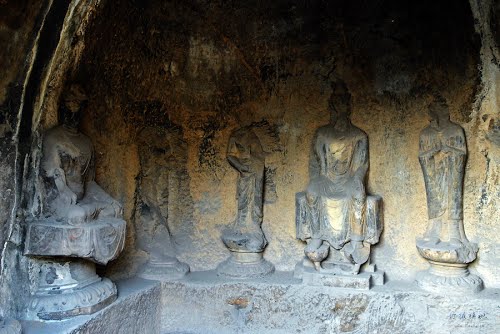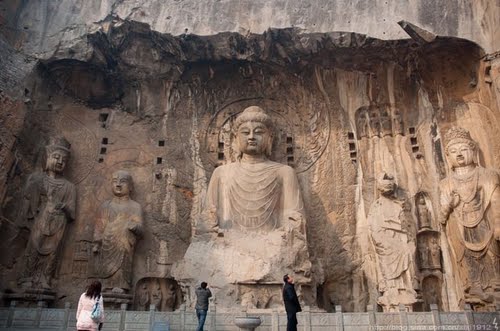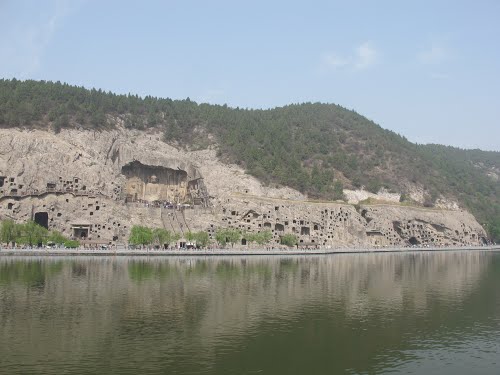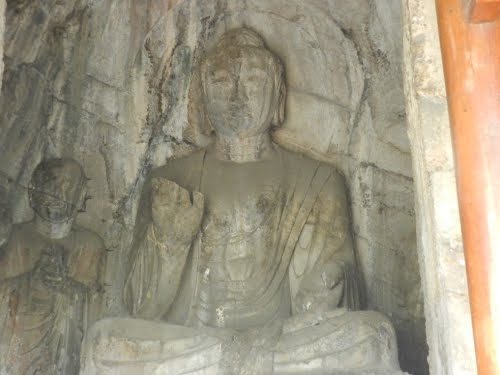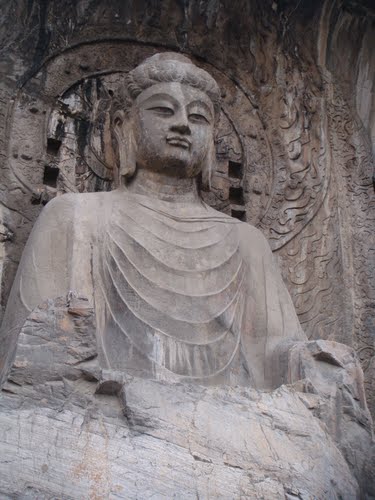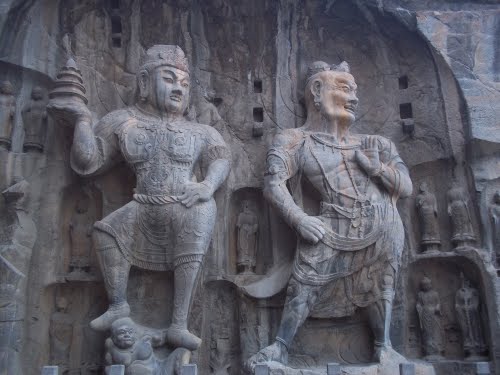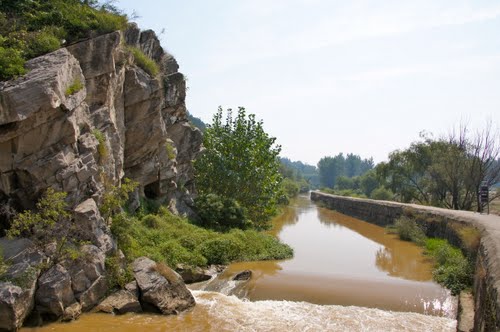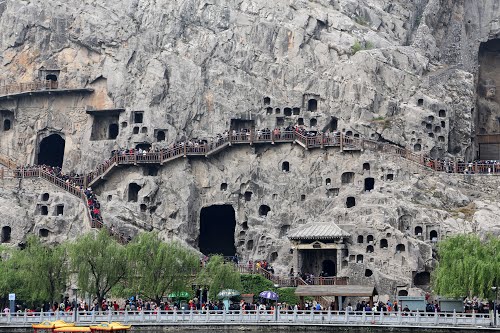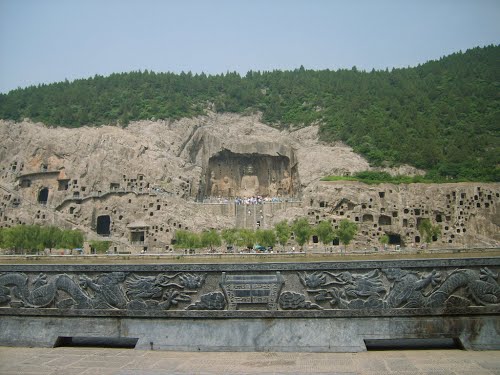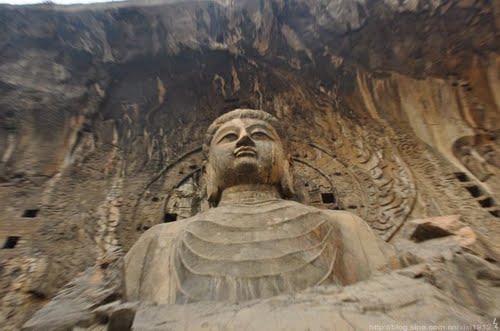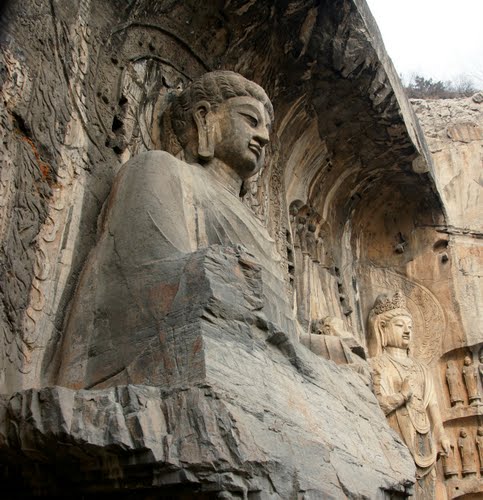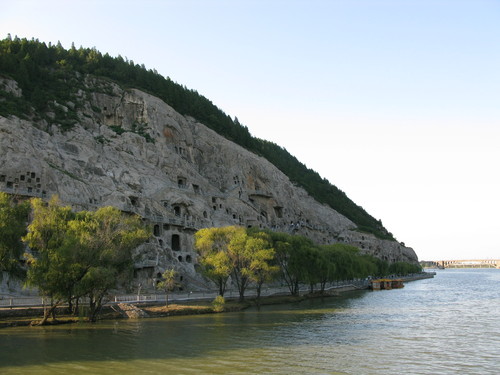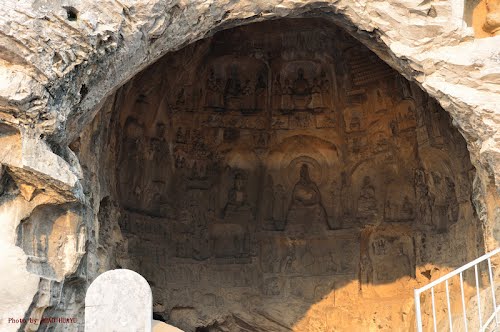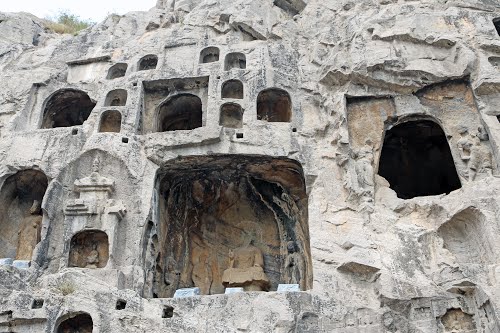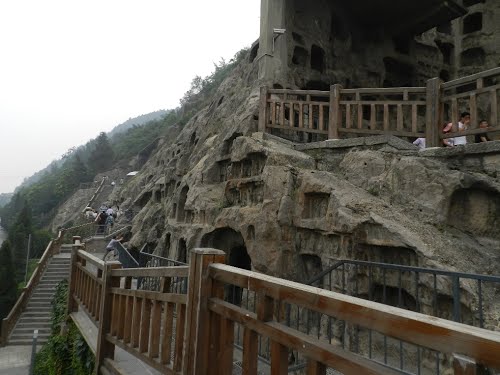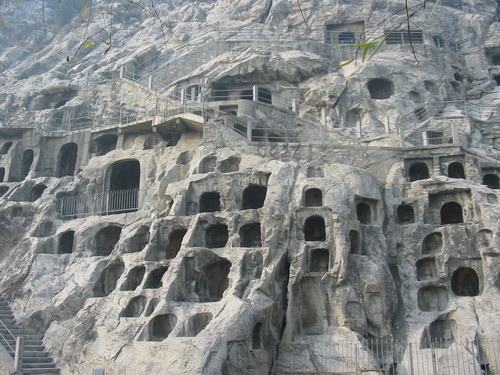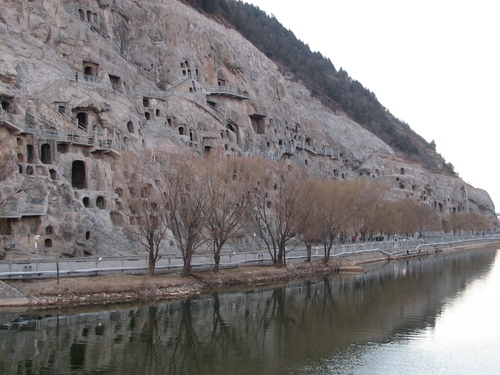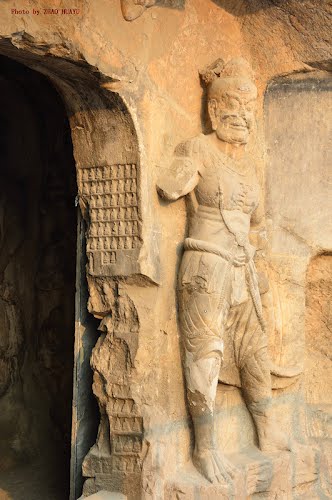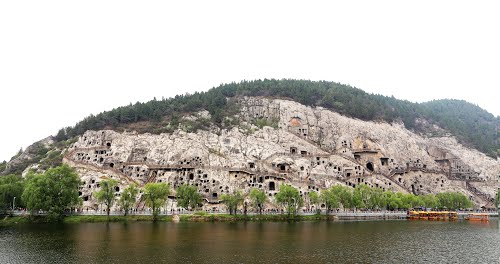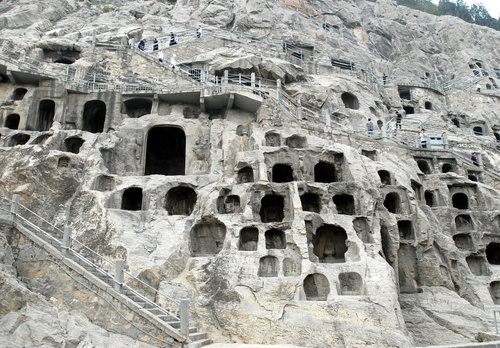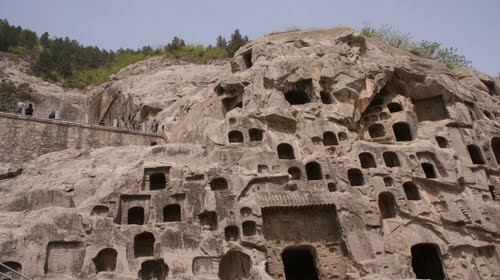The Longmen Grottoes (Dragon's Gate Grottoes) or Longmen Caves are one of the finest examples of Chinese Buddhist art. Housing tens of thousands of statues of Buddha and his disciples, they are located 12 kilometres south of present-day Luoyang in Henan province, China. The images, many once painted, were carved as outside rock reliefs and inside artificial caves excavated from the limestone cliffs of the Xiangshan and Longmenshan mountains, running east and west. The Yi River flows northward between them and the area used to be called Yique. The alternative name of "Dragon's Gate Grottoes" derives from the resemblance of the two hills that check the flow of the Yi River to the typical "Chinese gate towers" that once marked the entrance to Luoyang from the south.
There are as many as 100,000 statues within the 2,345 caves, ranging from an 25 mm to 17 m in height. The area also contains nearly 2,500 stelae and inscriptions, whence the name “Forest of Ancient Stelae", as well as over sixty Buddhist pagodas. Situated in a scenic natural environment, the caves were dug from a 1 kilometre stretch of cliff running along both banks of the river. 30% date from the Northern Wei Dynasty and 60% from the Tang, caves from other periods accounting for less than 10% of the total. Starting with the Northern Wei Dynasty in 493 AD, patrons and donors included emperors, Wu Zetian of the Second Zhou Dynasty, members of the royal family, other rich families, generals, and religious groups.
In 2000 the site was inscribed upon the UNESCO World Heritage List as “an outstanding manifestation of human artistic creativity,” for its perfection of an art form, and for its encapsulation of the cultural sophistication of Tang China.
History
Early history
The earliest history of the creation of Longmen Grottoes is traced to the reign of Emperor Xiaowen of Northern Wei dynasty when he shifted his capital to Luoyang from Dàtóng; Luoyang's symbolic value is borne by the fact that it served as the historic capital for 13 dynasties. The grottoes were excavated and carved with Buddhist subjects over the period from 493 AD to 1127 AD, in four distinct phases. The first phase started with the Northern Wei dynasty (493-534). The second phase saw slow development of caves as there was interruption due to strife in the region, between 524 and 626, during the reign of the Sui dynasty (581-618) and the early part of the Tang dynasty (618-907). The third phase, was during the reign of the Tang dynasty when Chinese Buddhism flourished and there was a proliferation of caves and carvings from 626 to the mid 8th century. The last phase, which was the fourth, was from the later part of the Tang dynastic rule extending to the Northern Song Dynasty rule, which saw a decline in the creation of grottoes. It came to an end due to internecine war between the Jin and Yuan dynasties.
Guyangdong or the Shiku Temple, credited to Emperor Xiaowen, was the first cave temple to be built at the center of the southern floor of the West Hill. Emperor Xuanwu of Northern Wei followed up this activity and excavated three more caves, two in memory of his father, Emperor Xiaowen, and one in memory of his mother; all three caves are grouped under the title of the "Three Binyang Caves" (Binyangsandong), which were built by the emperor over a 24-year period. Over 30% of the caves seen now were built during this period.
In 527, the Huangfugong or Shikusi grottoes, a major cave, was completed. It is a well conserved cave located to the south of the West Hill.
In 675, Fengxiansi Cave, on the southern floor of the West Hill was completed during the Tang dynasty rule. This marked the third phase of creation and the peak period of the gottoes' creation. It is estimated that 60% of the caves seen at Longmen came about in this period from 626 till 755. During this period, in addition to the caves which housed Buddha statues of various sizes, some Buddhist temples were also built in open spaces with scenic settings in the same complex. However, these are now mostly in ruins. During this phase, Emperor Gaozong and Empress Wu Zetian were instrumental in intensifying the activity when they were ruling from Luyong.
Later history
During the period of 1368 to 1912, when two dynasties ruled in China, namely the Ming dynasty from 1368 to 1644, and the Qing Dynasty from 1644 to 1912, there was cultural revival and the Longmen Grottoes received recognition both at the national and international level.
During the Second Sino-Japanese War, the Japanese looted the site and took many of the statues back to Japan. Many of these relics are now in Japanese museums.
Vandalism occurred in the 1940s, a result of political unrest. With the establishment of the People’s Republic of China in 1949, the grottoes have been declared as protected area and are being conserved. The Constitution of China, under Article 22, which among other issues also provides for protection of the natural heritage sites, has been further defined under various legal instruments enacted to protect and conserve this cultural heritage of China.
During the Warring States period, the general Bai Qi of Qin once defeated the allied forces of Han and Wei at the site. The site was subjected to significant vandalism at several points in its history. Major artifacts were removed by Western collectors and souvenir hunters during the early 20th century. The heads of many statues were also destroyed during the Cultural Revolution.

